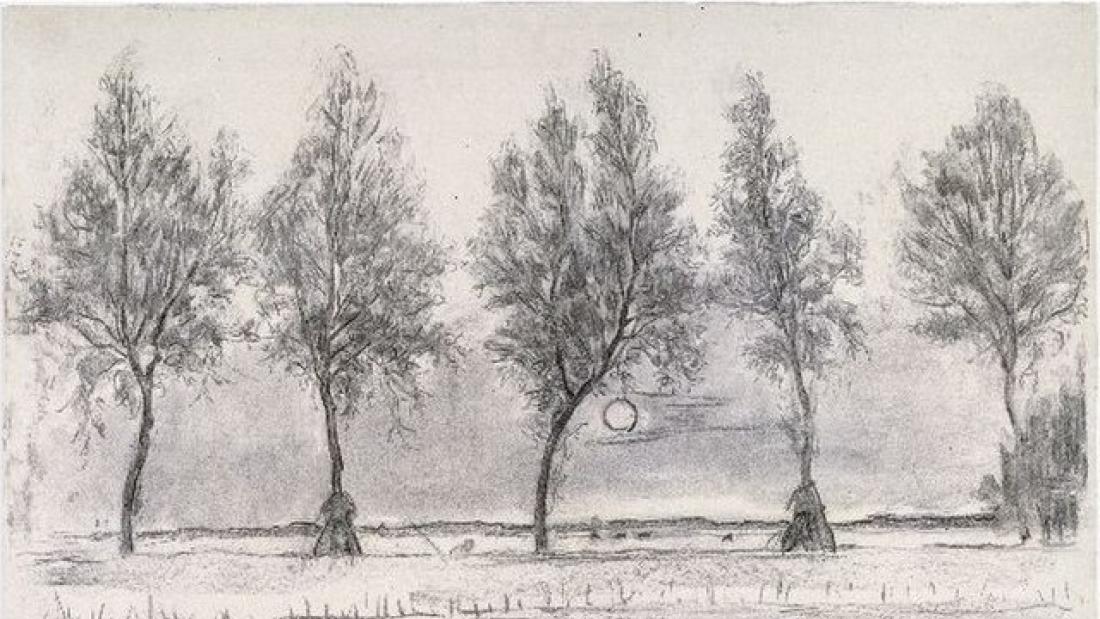Welsh and Swedish scientists disprove Leonardo Da Vinci’s ‘Rule of Trees’

New research carried out by scientists from Wales and Sweden has disproved Leonardo Da Vinci’s long-standing ‘Rule of Trees’
A ‘Rule of Trees’ was developed by da Vinci to describe how to draw trees has been largely adopted by science when modelling trees and how they function.
Now, scientists at Bangor University in the UK and the Swedish University of Agricultural Sciences (SLU) have discovered that this rule contradicts those that regulate the internal structures of trees.
Da Vinci’s interest in drawing led him to look at size ratios of different objects, including trees, so that he could create more accurate representations of them.
To correctly represent trees, he perceived a so-called ‘Rule of trees’ which states that “all the branches of a tree at every stage of its height are equal in thickness to the trunk when put together.”
It had been thought that Leonardo’s ‘Rule of Trees’ could also be applied to the vascular channels which transport water through a tree, with the individual channel sizes decreasing at the same ratio, as branches become narrower, while still adding up to the trunk’s volume.
This ‘rule’ had been accepted as part of metabolic scaling theory.
Vascular structures
But scientists from Bangor University and SLU publishing in the prestigious peer-reviewed journal PNAS, have shown that this model isn’t exactly correct when applied to the internal vascular structures of trees.
For water and nutrients to move efficiently through the tree, from root to leaf-tip, the vascular system has to maintain ‘hydraulic resistance’.
Ruben Valbuena and Stuart Sopp of Bangor University and SLU have calculated that for hydraulic resistance to work, there comes a point where the ‘Rule of Trees’ can no longer hold true.
In order to efficiently transport liquids from roots to leaf-tips, a tree’s vascular channels need to maintain a certain dimension to maintain hydraulic resistance. Therefore, the plant has to reduce in its volume as it reaches its extremities, causing a higher ratio of capillary to the surrounding plant mass.
As Dr Ruben Valbuena (Honorary Professor at Bangor University and now Professor at SLU) explains,
“While a great ‘tip’ for artists, which is what Da Vinci intended, Leonardo’s Rule of trees does not hold up at the micro level”.
“We believe our calculations further refine metabolic scaling theory and improve understanding the plant system as a whole. Our re-calculations may also explain why large trees are more susceptible to drought, and may also be at a greater vulnerability to climate change.”
Co-author Stuart Sopp, currently studying for his PhD in Environmental Science at Bangor University said:
“One of our aims was to produce a ratio which could be used to estimate tree biomass and carbon in forests. This new ratio will assist in calculating global carbon capture by trees.”
Support our Nation today
For the price of a cup of coffee a month you can help us create an independent, not-for-profit, national news service for the people of Wales, by the people of Wales.







Interesting. But Bangor University “in the UK”? Why not “in Wales”? Dewch ‘mlaen, ‘Nation’ Cymru.
These scientists have got to the root of the matter. They’ve twigged how the ‘Rule’ works (or rather doesn’t and now intend to branch out. [That’s tri jôcs too many, Ed.]
I wood say it’s time to leaf, but that would be sappy
Oak-ay!
A rule designed for drawing trees, hundreds of years ago has been used to calculate capillary flows in trees?
Yet the theories of capillary action have been well known for years. But well done Bangor Uni and SLU for correcting this and adding to the sum of human knowledge
Nothing has been disproven here, based on the report what they have “disproven” is an assumption regarding the inner workings of a tree taken from one mans outlook on how to draw a tree while considering nothing about it’s internal workings……. this story is a lie from the headline